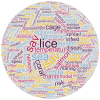A Scoping Review on GIS Technologies Applied to Farmed Fish Health Management
- PMID: 38003143
- PMCID: PMC10668695
- DOI: 10.3390/ani13223525
A Scoping Review on GIS Technologies Applied to Farmed Fish Health Management
Abstract
Finfish aquaculture, one of the fastest growing intensive sectors worldwide, is threatened by numerous transmissible diseases that may have devastating impacts on its economic sustainability. This review (2010-2022) used a PRISMA extension for scoping reviews and a text mining approach to explore the extent to which geographical information systems (GIS) are used in farmed fish health management and to unveil the main GIS technologies, databases, and functions used to update the spatiotemporal data underpinning risk and predictive models in aquatic surveillance programmes. After filtering for eligibility criteria, the literature search provided 54 records, highlighting the limited use of GIS technologies for disease prevention and control, as well as the prevalence of GIS application in marine salmonid farming, especially for viruses and parasitic diseases typically associated with these species. The text mining generated five main research areas, underlining a limited range of investigated species, rearing environments, and diseases, as well as highlighting the lack of GIS-based methodologies at the core of such publications. This scoping review provides a source of information for future more detailed literature analyses and outcomes to support the development of geospatial disease spread models and expand in-field GIS technologies for the prevention and mitigation of fish disease epidemics.
Keywords: GIS methods; disease; farmed fish; health management; risk mapping; risk modelling; scoping review; surveillance.
Conflict of interest statement
The authors declare no conflict of interest.
Figures







References
-
- Silva C., Ferreira J.G., Bricker S.B., DelValls T.A., Martín-Díaz M.L., Yáñez E. Site Selection for Shellfish Aquaculture by Means of GIS and Farm-Scale Models, with an Emphasis on Data-Poor Environments. Aquaculture. 2011;318:444–457. doi: 10.1016/j.aquaculture.2011.05.033. - DOI
-
- Henriksson P.J.G., Rico A., Troell M., Klinger D.H., Buschmann A.H., Saksida S., Chadag M.V., Zhang W. Unpacking Factors Influencing Antimicrobial Use in Global Aquaculture and Their Implication for Management: A Review from a Systems Perspective. Sustain. Sci. 2018;13:1105–1120. doi: 10.1007/s11625-017-0511-8. - DOI - PMC - PubMed
-
- Das S., Sahoo P.K. Markers for Selection of Disease Resistance in Fish: A Review. Aquac. Int. 2014;22:1793–1812. doi: 10.1007/s10499-014-9783-5. - DOI
-
- Borrego J.J., Valverde E.J., Labella A.M., Castro D. Lymphocystis Disease Virus: Its Importance in Aquaculture. Rev. Aquac. 2017;9:179–193. doi: 10.1111/raq.12131. - DOI
Publication types
Grants and funding
LinkOut - more resources
Full Text Sources

